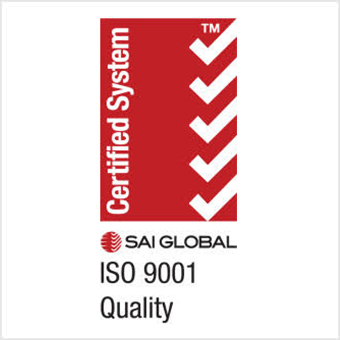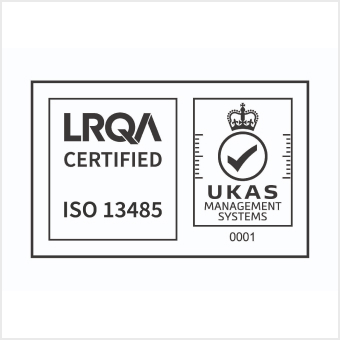Elements in Water by Inductively Coupled Plasma-Mass Spectrometry
Part 1: Introduction to ICP-MS and Water Testing
- Overview of Water Quality Testing
- Importance of water quality testing in public health, industrial processes, and environmental monitoring.
- Regulatory standards for water quality: WHO, EPA, ISO.
- Common contaminants in water: Heavy metals, metalloids, and other trace elements.
- Introduction to Inductively Coupled Plasma Mass Spectrometry (ICP-MS)
- Brief history of ICP-MS development.
- The principle of ICP-MS and its evolution as an analytical technique.
- Comparison with other methods: Atomic absorption spectrometry (AAS), graphite furnace AAS, ICP-OES.
- Advantages of ICP-MS over other methods in terms of sensitivity, detection limits, and multi-element analysis.
- Principle of ICP-MS
- Description of the components of ICP-MS: Plasma torch, ion source, mass spectrometer, and detector.
- Mechanism of ionization and how it relates to the detection of elements in water.
- Key steps in ICP-MS analysis: Sample introduction, ionization, mass selection, and quantification.
Part 2: The ICP-MS Instrumentation and Operation
- ICP-MS Instrumentation
- Detailed breakdown of the components of an ICP-MS system:
- Plasma torch
- Nebulizer and spray chamber
- Interface region
- Quadrupole and ion detector
- Function and operation of each component and how they contribute to the analysis of elements in water.
- Sample Preparation for ICP-MS
- Importance of sample preparation in ensuring accurate results.
- Sample types: Drinking water, wastewater, surface water, ground water, and industrial water.
- Techniques for sample collection, preservation, and transportation.
- Common methods of sample digestion: Acid digestion, microwave digestion, and filtration.
- Sample matrix effects: How high concentrations of salts or organic matter in water can impact results and mitigation strategies.
- Calibration and Standardization
- Calibration procedures in ICP-MS testing.
- Standard calibration curves and the use of internal standards.
- External standard calibration vs. internal standard calibration.
- Quality control methods: Blank, spiked samples, and certified reference materials.
Part 3: Analytical Methods and ICP-MS Applications
- Quantitative and Qualitative Analysis Using ICP-MS
- How ICP-MS detects and quantifies elements in water.
- The role of isotopic ratios and mass-to-charge ratios in element identification.
- Interferences and their effects on ICP-MS analysis.
- Isobaric interferences
- Polyatomic interferences
- Solutions for minimizing interferences: Collision/reaction cell technology.
- Detection Limits and Sensitivity
- Sensitivity of ICP-MS: Low detection limits for trace and ultra-trace elements.
- How detection limits vary for different elements.
- Calculating detection limits: Signal-to-noise ratio and method detection limit (MDL).
- Applications of ICP-MS in Water Testing
- Determination of trace metals in drinking water: Lead, mercury, arsenic, cadmium, etc.
- Environmental monitoring: Monitoring contaminants in surface and groundwater.
- Industrial applications: Monitoring heavy metals in wastewater from manufacturing processes.
- Regulatory compliance: Meeting EPA and WHO guidelines for elemental concentration in water.
- Special applications: Detection of metalloids, rare earth elements, and isotopic analysis for tracer studies.
Part 4: Interference Management and Data Interpretation
- Interferences in ICP-MS and Their Mitigation
- Understanding and identifying interferences in ICP-MS.
- Methods for minimizing or eliminating spectral and matrix interferences.
- Techniques such as reaction cells and collision cells for interference reduction.
- Strategies for dealing with high total dissolved solids (TDS) and organic compounds in water samples.
- Data Analysis and Quality Assurance
- Data acquisition: Time-resolved and peak hopping methods.
- Software used for data analysis and results reporting.
- Statistical analysis in ICP-MS data: Precision, accuracy, and reproducibility.
- Quality assurance practices: Calibration checks, duplicate samples, and proficiency testing.
- Challenges in ICP-MS Water Testing
- Challenges faced in trace element detection in complex water matrices.
- Sample preparation challenges with high-salinity or organic-rich water.
- Addressing issues like matrix effects, sample contamination, and detection limits.
Part 5: Regulatory Standards, Validation, and Compliance
- Regulatory Standards for Water Quality
- EPA (Environmental Protection Agency) standards for drinking water (Safe Drinking Water Act).
- WHO guidelines on water quality: Maximum allowable concentrations of heavy metals and trace elements.
- International standards (ISO, ASTM) for water testing and analysis.
- National regulations for wastewater testing.
- Validation of ICP-MS Water Testing Methods
- Method validation protocols for ICP-MS in water testing.
- Establishing accuracy, precision, and reproducibility in test methods.
- Field and laboratory validation: Challenges and solutions.
- Importance of proficiency testing and participation in inter-laboratory studies.
- Compliance with Regulatory Limits
- Case studies: ICP-MS in compliance with EPA standards for lead and arsenic in drinking water.
- Examples of non-compliance and its impact on public health and industry.
- Corrective actions and the role of ICP-MS testing in improving water quality standards.
Part 6: Case Studies and Real-World Applications
- Case Study: ICP-MS for Drinking Water Contamination Testing
- Detection of lead, arsenic, and other heavy metals in drinking water.
- Analysis of water quality before and after treatment processes.
- The role of ICP-MS in regulatory enforcement and public health protection.
- Case Study: Industrial Water Analysis for Wastewater Monitoring
- Applications of ICP-MS in the analysis of wastewater discharges from industrial facilities.
- Determining heavy metal contamination and the impact on ecosystems.
- The role of ICP-MS in environmental compliance and pollution control.
- Case Study: Environmental Monitoring of Surface and Groundwater
- Using ICP-MS to monitor trace element levels in rivers, lakes, and groundwater.
- Investigating sources of contamination and tracking pollutant levels over time.
- Long-term environmental impact studies: Heavy metals in agricultural runoff, urban water systems.
Part 7: Future Trends and Advancements in ICP-MS Water Testing
- Advances in ICP-MS Technology
- Next-generation ICP-MS systems: Advances in sensitivity, speed, and resolution.
- Multi-element and isotopic analysis: How ICP-MS is evolving for new applications.
- New ionization techniques: Exploring laser ablation ICP-MS, coupling with chromatography systems.
- Emerging Contaminants and Their Detection
- The detection of pharmaceutical residues, personal care products, and endocrine-disrupting chemicals.
- The role of ICP-MS in tracking microplastics and emerging pollutants in water.
- Real-time water quality monitoring using portable ICP-MS devices.
- Integration of ICP-MS with Other Analytical Techniques
- Hyphenation of ICP-MS with other techniques such as liquid chromatography (LC-ICP-MS), gas chromatography (GC-ICP-MS), and tandem mass spectrometry (ICP-MS/MS).
- Benefits and challenges of combining ICP-MS with other technologies for comprehensive water analysis.
- Case studies of integrated techniques for specific water quality assessments.
Part 8: Conclusion
- Summary of Key Points
- A recap of the essential aspects of ICP-MS testing for elements in water.
- The advantages of ICP-MS for detecting trace elements and heavy metals in water samples.
- The role of ICP-MS in meeting regulatory requirements and safeguarding public health.
- Future Directions in Water Quality Testing
- How ICP-MS and related technologies will continue to evolve in response to emerging water quality concerns.
- The increasing importance of real-time monitoring and data-driven decision-making in water quality management.
- Closing thoughts on the future of water testing and ICP-MS applications in ensuring safe water for all.



